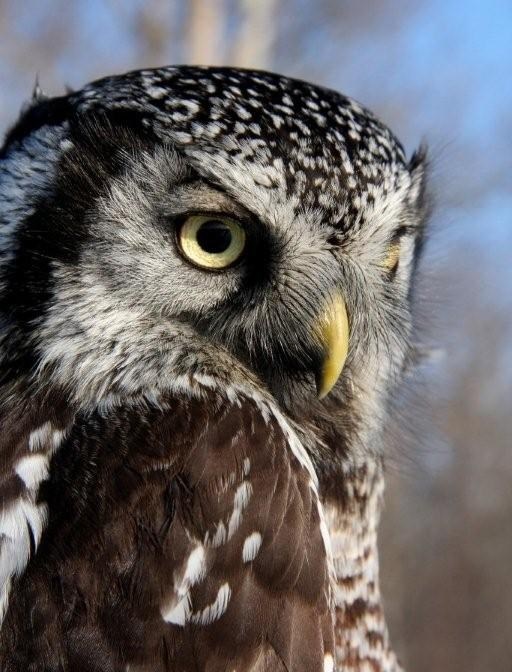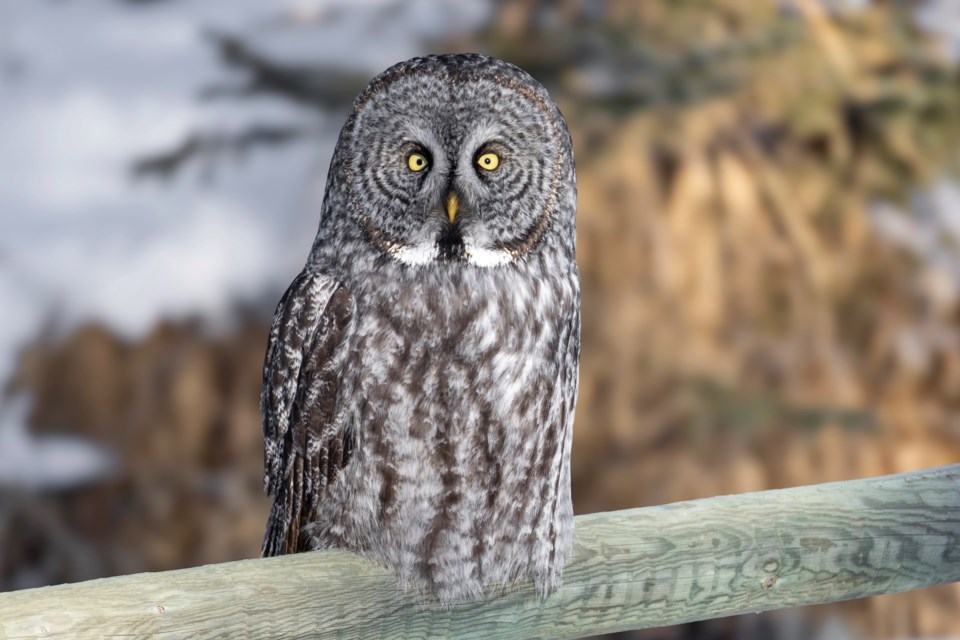Sightings of rare owls are on the rise in Alberta, which has many dubbing it Owlberta.
Great grey owls and northern hawk owls, two enigmatic species that are typically difficult to find, are now being seen at an unusually high rate in Alberta, with social media and the internet flooded with photos of them over the last few months.
There's a scientific reason behind the sudden surge in sightings, according to STRIX Ecological Consulting biologist Lisa Takats Priestley.
"We are experiencing an invasion of great grey owls and northern hawk owls in central and southern Alberta," said Priestley, who is Birds Canada's coordinator of the Alberta nocturnal owl population survey.
The invasion, known by researchers as an irruption, is a phenomenon that has brought these birds from remote locations to more developed areas in droves.
"These two species breed in the boreal and foothills regions of Alberta," she continued. "They normally overwinter in those areas, unless there is a lack of food."
Great grey owls and northern hawk owls are voracious predators, with great greys — the largest owls in North America — consuming up to seven small mammals every day, according to the Cornell Lab of Ornithology.
"It could be that there are just fewer mice or that the snow conditions are not suitable for them to catch the mice," said Priestley.
That lack of food is most likely what has driven these elusive birds to more populated parts of Alberta, which has led to a dramatic increase in sightings along rural roads and other areas frequented by humans.

"In the Beaverhills area east of Edmonton, there have been numerous hawk owl sightings, and great greys have moved into an area north of Fort Saskatchewan," said Priestley. "There are also many sightings of great greys happening along the east, as the owls move out of the foothills in search of food."
Further south, Mountain View County has become a hot spot for great grey owl sightings, even more than usual.
"Water Valley is always a great place to see great greys, but this year there are definitely more which means they have moved east out from the upper foothills," said Priestley.
The environment also influences the irruptions and movements of these birds.
"Invasions can also happen when there is a change in the landscape. Recently burned areas provide great hunting grounds for northern hawk owls. They are taking advantage of access to food resources," said Priestley.
While they're currently taking advantage of better weather and more bountiful food down south in unnatural proximity to human communities, the owls will most likely return home soon.
"These owls will return to their breeding areas in March," said Priestley.
The owls' natural habitats deep in the foothills and boreal forests, coupled with population fluctuations, make estimating the populations of the two species difficult.
"The great grey owl is listed 'sensitive,' a more scarce species, widely distributed in foothill and boreal habitats. It is difficult to monitor populations. It requires stands of mature forest for nesting, thus is vulnerable to forest clearing," said Priestley. "The northern hawk owl is listed 'secure' however, it is a widely distributed and uncommon species. Natural fluctuations make determining population trends difficult."
Many more questions remain around these owls and their invasion.
"We still don't understand how they can all congregate into places with a lot of prey. Do they just happen upon the place or are they able to communicate with other owls that this is the place to go?" wondered Priestley.
According to Priestley, these large-scale invasions are inconsistent and can happen every few years or many years apart, with the largest documented invasion occurring in 2000-2001.
"We are documenting the invasion and hope to write a scientific paper," she said.
Those who spot either of these owls are encouraged to send photos to Priestley at [email protected], which will help her team of researchers track their numbers and movements.
Great grey owls are massive birds, standing at up to nearly three feet tall with a wingspan of up to five feet, and exhibit a remarkable fearlessness of humans in many cases, making them relatively easy to spot and photograph , although care must be taken to ensure that birdwatching and photography practices are ethical. Whether an owl remains still or flies away, onlookers should maintain a respectful distance and try not to stress the bird. The fearlessness of great grey owls is also a factor in these large birds being prone to vehicle collisions.
Snowy owl migration patterns in Alberta also fluctuate in accordance with food availability, though unlike great grey owls and northern hawk owls, snowy owls are not year-round residents of the province.




